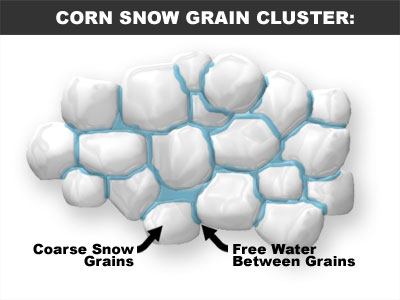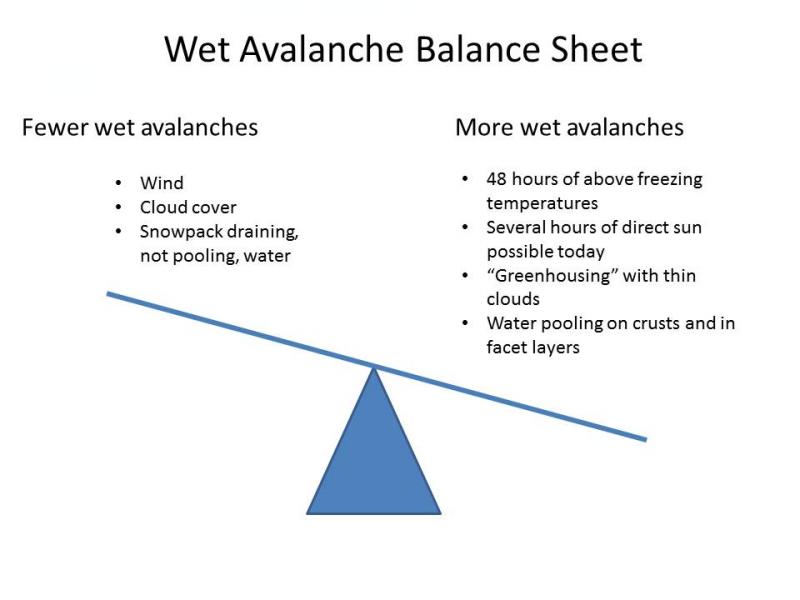
Evelyn Lees
1991-2019
Wet Avalanches
(Originally published March 13, 2013)
When it comes to wet snow avalanches, a lot of good, but general, simplifications are thrown around, such as watch out for the first warm day, rain on cold snow, 3 non-freezing nights lead to wet slab avalanches, etc. It’s certainly a lot more complicated, but less studied than dry snow avalanches.

Every other year, at the National Avalanche School, one of my favorite talks is Larry Heywood’s “Wet Snow Forecasting and Control”. Looking back through my NAS 2011 notes, here are a few interesting points from his talk.
Wet Snow Fatalities
- Wet snow avalanches – comprise about 9% of US avalanche fatalities
- 35% were human triggered
- 47% were natural triggers
Wet snow is at 0 deg C, and composed of ice, air and water. While not field practical, studies show the percentage of water in the matrix is important.
- At less than 7% liquid water, ice to ice bonds still exist, and air is continuous in snowpack.
- At greater than 7% liquid water, the snowpack has continuous water, meaning no inter- grain contact, and this is when the snow layer has very low strength.
Stratigraphy is important . It affects –
- Rate of infiltration
- Pattern of infiltration
- Concentration of water
- Defines capillary boundaries
In addition, the age of snow and history of prior melt-freeze events influence the chance of wet snow avalanches. Many practitioners feel having a faceted layer in the snow pack is key for wet slab avalanches.


Larry Haywood’s Wet Snow Triangle –
I also found an interesting two-part article on Wet Avalanches and Rescue Considerations by Dale Atkins.
More reading:
The Avalanche Review, vol 26, no 4 - Several articles on wet avalanches by Simon Trautman (pg 16), Blase Reardon (pg 18), Erich Peitzsch (pg 20), and a note from Bruce Tremper/Brett Kobernik about a large wet slab avalanche on Gobblers Knob (pg 23)






